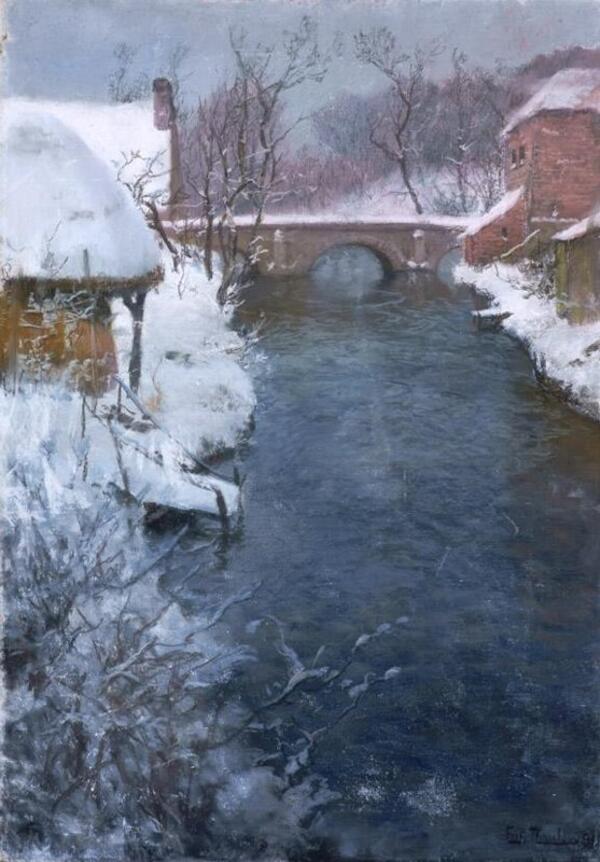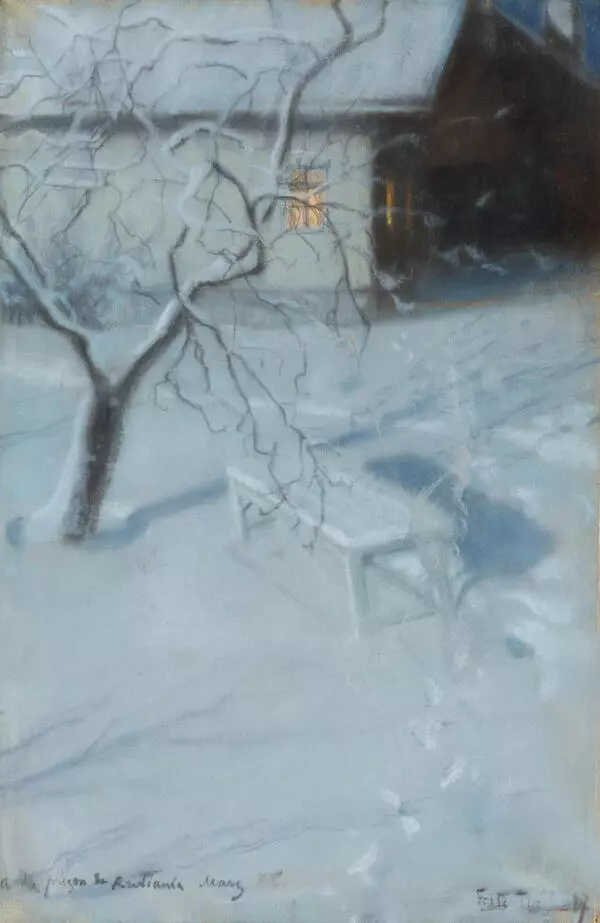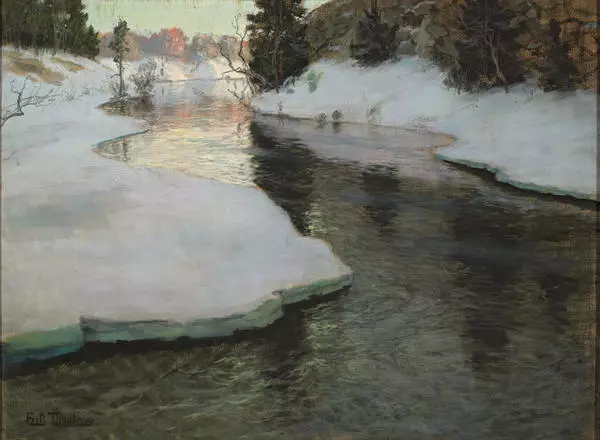Frits Thaulow, a Norwegian landscapist, painter, draughtsman, and engraver, was born in Oslo in the middle of the 19th century into a family of a pharmacist. He studied first at the Danish and then at the German art academies. Since his teachers were marine painters, Thaulow’s work began in the genre of seascape. Later the artist portrayed water very often as well, incorporating it into the forest and urban landscapes, giving a lot of attention to the light reflections on its surface.
After his encounter with French naturalist realism in Paris, Thaulow’s style and manner of painting changed. The works of the Impressionists also had a huge influence on the painter. Now the artist tried to fill his works with light and air as much as possible, painting only in plein air — in any weather. His palette consisted of pearly gray, pale, bluish-green tones. The subjects of his works were simple, but showed excellent technique and a fine sense of life, a feeling of nature. Thaulow often worked in quiet, little-known corners of Norway and France. And he considered the paintings depicting these places the best in his oeuvre.
Thaulow traveled extensively around Europe. He made a number of trips to different places in search of picturesque corners: Paris, Scotland, Venice, Hamburg, etc. He visited the United States of America.
In 1880 Thaulow opened the first plein air academy in the Norwegian municipality of Mudum. A few years later he became one of the founders of the annual exhibition of contemporary art in his hometown. It was at this time that his own style, based on a fundamentally new interpretation of the Norwegian landscape, matured.
Thaulow painted mostly urban views, incorporating people walking through the streets of Oslo into his plein air works. The artist turned to the pastel technique and excelled in it. The snow in his winter landscapes is both absolutely lifelike (which is reminiscent of the realist school) and unrealistically beautiful (which brings to mind the impressionism and symbolism). His works, devoid of social subtext, conveyed one of the popular ideas of the late 19th century — “art for art’s sake”.
After his encounter with French naturalist realism in Paris, Thaulow’s style and manner of painting changed. The works of the Impressionists also had a huge influence on the painter. Now the artist tried to fill his works with light and air as much as possible, painting only in plein air — in any weather. His palette consisted of pearly gray, pale, bluish-green tones. The subjects of his works were simple, but showed excellent technique and a fine sense of life, a feeling of nature. Thaulow often worked in quiet, little-known corners of Norway and France. And he considered the paintings depicting these places the best in his oeuvre.
Thaulow traveled extensively around Europe. He made a number of trips to different places in search of picturesque corners: Paris, Scotland, Venice, Hamburg, etc. He visited the United States of America.
In 1880 Thaulow opened the first plein air academy in the Norwegian municipality of Mudum. A few years later he became one of the founders of the annual exhibition of contemporary art in his hometown. It was at this time that his own style, based on a fundamentally new interpretation of the Norwegian landscape, matured.
Thaulow painted mostly urban views, incorporating people walking through the streets of Oslo into his plein air works. The artist turned to the pastel technique and excelled in it. The snow in his winter landscapes is both absolutely lifelike (which is reminiscent of the realist school) and unrealistically beautiful (which brings to mind the impressionism and symbolism). His works, devoid of social subtext, conveyed one of the popular ideas of the late 19th century — “art for art’s sake”.






